Went to the airport on Saturday morning and waited for our visitors, Scott and Arlene. To pick up travelers, you have to go through security, but after that, you can sip coffee at a Starbucks or a Gloria Jean’s (a California franchise), and pass the time. At the arrivals door I saw two adorable little girls with long, neatly combed brown hair, holding bouquets of flowers for their dads’ arrival. I took a picture of the board – it gives a glimpse of the international neighborhood we are in.
We are driving our third leased 3M car. This one, to my chagrin, is a BMW. I would like to drive around Turkey in a beatup Ford. But there is office hierarchy to think of. Sankar cannot drive a vehicle that is “lower” than what the marketing managers are provided. Our choices were a Mercedes or a BMW. The car had to be ordered and we had just received it two days before. Getting in with our guests, we failed to close the driver’s door completely. Oddly, there was no indication of this on the dashboard, but on the freeway returning from the airport, two different cars full of people came up next to our car, honked, rolled down their windows and pointed at the problem, obviously concerned. Our problems are everyone’s problems here.
It was great to see Arlene and Scott, and we were thrilled the day was sunny. It had rained the entire week before (Turkish weather is unpredictable and highly changeable, somewhat like Minnesota weather, only without the lower range). After lunch, we walked down through Arnavutkoy with its quaint shops and wooden Ottoman houses, to the Bosphorus. There we strolled along a cement path, dodging corn-on-the-cob sellers, people walking their dogs, and fishermen casting their lines behind them with no regard to a passerby they might snag, and then flinging them out into the salt water.
After twenty minutes we came to Rumeli Hisar, the star of a major drama that played out in 1453. The city of Constantinople was up until then Christian, but Fatih Mehmet, an upstart Turk from the east, changed that. In 4 months, using 3,000 workers, he built “The Castle of Rumelia” on the shores of the Bosphorus, directly across from Anadolu Hisari, a smaller castle that his grandfather had built. They stand at the very top of the map above, two structures facing each other across what appears to be a river.
The castle gave Mehmet control of the upper Bosphorus and traffic in and out of the Black Sea, but he still could not conquer Constantinople, just a few miles south. The Golden Horn, the waterway running northwest to southeast (see map) around a horn-like point and into the Sea of Marmara, was protected by an enormous chain that floated on buoys. Part of the original chain is on display at a museum in Istanbul, and I will try to see it this weekend, and take a photo for my next blog.
Mehmet finally prevailed by thinking creatively. He used oxen and wheeled platforms to drag seventy ships up the hill from the Bosphorus, heading west and then south, and then slipping them into the city behind its defenses.
The rulers of the city had known for months that they were in trouble, and had appealed for help to other countries, but I try to imagine the first person that saw the hulking ships—black shapes sliding down toward the water—and realized what that meant. It was the end of Christian Constantinople and the beginning of Muslim Istanbul. You can see this proclaimed on T shirts here. One Scott and Arlene pointed out this past week reads, “Istanbul. Since 1453.”
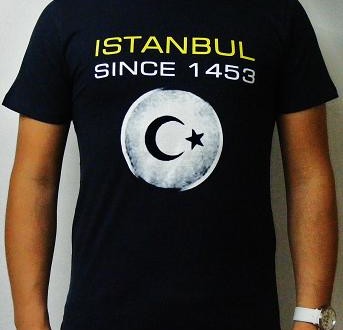
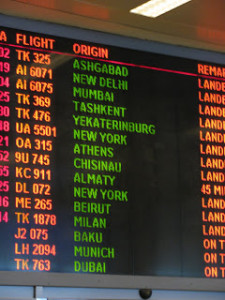
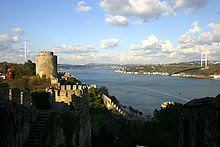
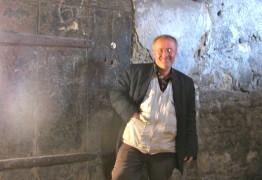
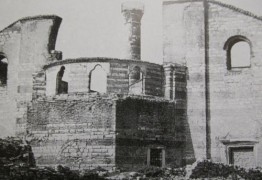
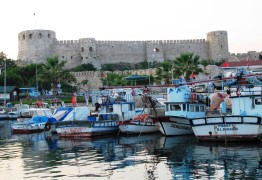
Fascinating! Istanbul sounds a little like the MN State Fair on an international scale(especially because maize was a “New World” development). Thanks again for your exciting narrative.